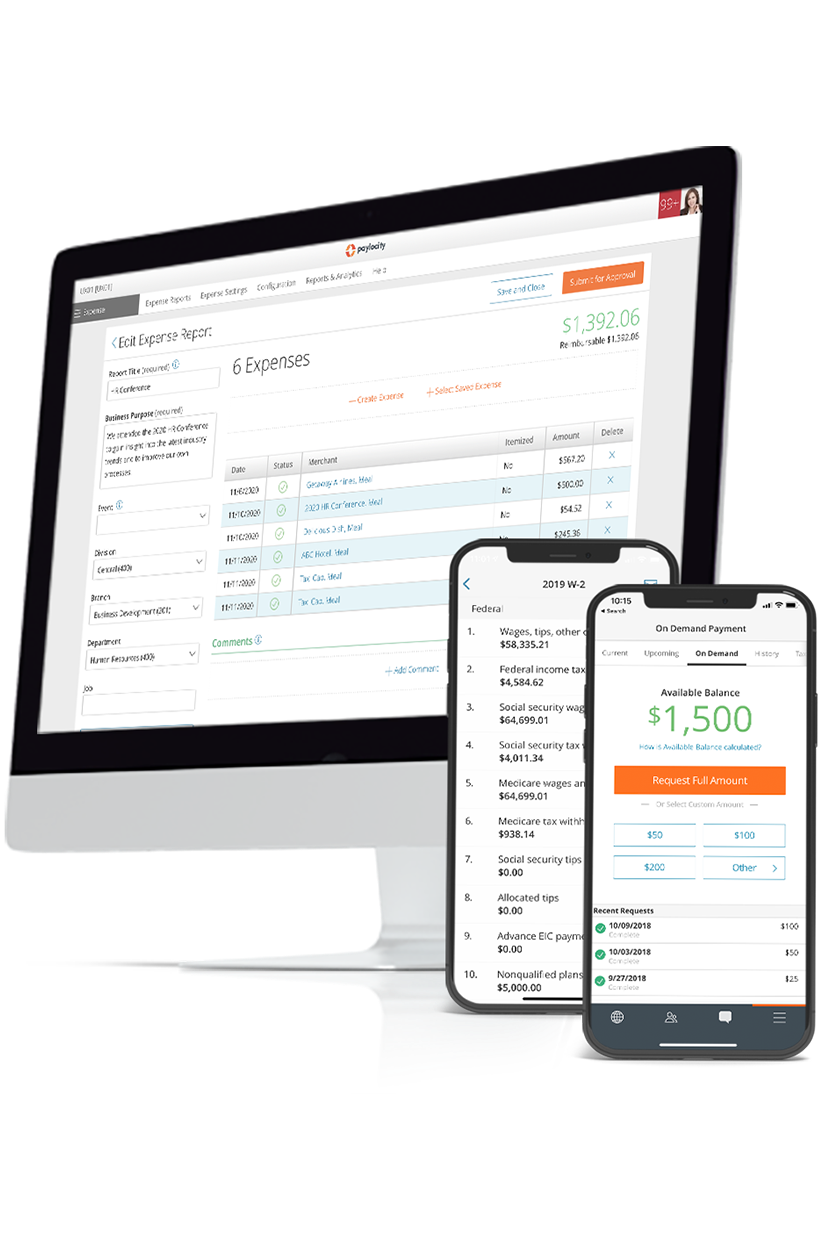resources
How Long Must You Keep Payroll Records?
February 07, 2023
Explore best practices for setting up a payroll record filing system, what to keep, and for how long.
Blog Post

Do the words IRS audit spark fear deep in your core? Well, it doesn’t have to.
Whether your payroll records are digital or stuffed in a file cabinet, several federal laws and regulations require you to keep payroll documentation for multiple years. If you know the best practices and retention timelines, you’ll be set if the IRS or other agencies come knocking at your door.
So how long exactly do you need to keep paycheck and payroll records? While some states have varying requirements, the federal breakdown is fairly cut and dry. Explore these frequently asked questions, as well as a breakdown by retention requirements, and breathe easy!
What Are Payroll Records?
Before you focus on the length of time, you’ll need to know what exactly counts as a payroll record. Payroll or paycheck record is a term for all documentation related to paying an employee. This is more than just a paystub; it is a compilation of information such as:
- Federal Employer Identification Number (FEIN) allows the Internal Revenue Service (IRS) to identify your business quickly.
- Personal Information such as an employee’s name, address, social security number, contact details, and date of birth.
- Employment information such as offer letters, Form I-9s, positions held, background checks, professional references, acknowledged company policies, evaluations, and termination information.
- Direct deposit details that include financial institution names, account numbers, and routing numbers.
- Timesheets that include regular hours worked, overtime hours, and pay period information.
- Pay details that include the amount paid, type of wage payment, any supplemental pay, tips, beginning and end dates, total hours worked, employee pay basis, and exempt status.
- Deductions such as wage garnishment orders, union dues, deferred compensation information, and benefit deductions.
- Leave records such as paid time off (PTO) and vacation time balances and associated payment amounts. Store any documentation for leaves, such as Family Medical Leave Act (FMLA), state-paid leave programs, and paid sick leave.
- Reimbursement forms such as expense reports for work travel, office supplies, mileage, etc.
- Tax documents including federal, state, and local tax forms and tax return copies. Also save W-4s, Employee Withholding Certificates, and any state-specific tax withholding certificates and filed forms with confirmation numbers.
Why Should You Retain HR & Payroll Records?
You could be audited and asked to produce proof of these payroll records at any point. There could be a dispute with a former or current employee. An employee could go on leave, and you would need to supply documentation for the benefits. Regardless of the reason, recordkeeping is the responsibility of the organization. Reports should be downloaded and stored for the designated length of time. Let’s dive in.
How Long Do You Have to Keep Payroll Records?
Several federal agencies and governing bodies require you to retain different records for differing lengths of time. Here is a simple breakdown by time and by agency:
Records That Should Be Kept for One Year
Keep detailed employment records such as applications, promotions, demotions, or terminations for at least one year after the record was created, unless you work in an educational institution or for the local government.
The U.S. Equal Employment Opportunity Commission (EEOC) can use these documents to prove or disprove if an employee is discriminated against when they were terminated. If someone files a charge of discrimination under Title VII, the ADA, or GINA, you’ll need to hold on to all records related to the charge until the final disposition.
Records That Should Be Kept for Two Years
The U.S. Department of Labor (DOL) and the EEOC state you need to save timecards, work, and time schedules, and wage rate tables for at least two years. So, be sure to save anything related to wage computations and pay grade increases. If you work for an educational institute or local government, you’ll need to hang on to detailed employment records for two years.
Records That Should Be Kept for Three Years
The Fair Labor Standards Act (FLSA) requires documentation of gender, occupation, workweek, regular hourly pay rate, sale and purchase records and bargaining agreements for no less than three years.
Records That Should Be Kept for Four Years
The IRS requires you to save payroll and paycheck records that include dates of wages, dates of employment, and dates and amounts of tax deposits for at least four years. The clock starts after the filing of the fourth quarter of the year.
Records That Should Be Kept for Six Years
Some records such as benefit plan documents, Form 5500, financial statements, benefit election forms, plan termination records, 401(k) forms, COBRA information should be kept for at least six years after the plan date or employee separation.
Records Required by Your State Varies.
State requirements (both in terms of time and which documents to save) can vary so check with your state government. For example, California and Arizona require you to save records for four years, while Montana requires five years. Some states abide by the Wage Theft Prevention Act, which increases the requirement from three to six years. If you’re a Paylocity client, log in to the PEAK knowledge base for your state-specific guidelines.
How Long Should an Employee Keep Paycheck Stubs?
Encourage your employees to keep their own paystub records for at least 12 months or until they file their annual tax returns. They may also need to show documentation when buying a new house or refinancing. If you offer cloud-based HR software, they will be able to access these documents as needed.
| Length of Time | Records to Keep |
|---|---|
| 1 Year |
|
| 2 Years |
|
| 3 Years |
|
| 4 Years |
|
| 5 Years |
|
| 6 Years |
|
How Should You Store Payroll Records?
So does it matter if these documents are cluttering a mailroom, stored on a desktop, or available through an app? The most important part of storing payroll records is that they’re kept in a safe, secure, and accessible place. If requested, you’ll need to provide this information to the U.S. Department of Labor representatives within 72 hours of the request, so you may want to store everything in an office, or through cloud-based HR software, such as Paylocity. Here are the positives and negatives to each type of payroll record storage.
Paper Files
While paper documents may be a good option for startups or smaller businesses, there are a few things to consider. If hard copies are saved in a physical location, they’ll need to be protected from physical danger such as fire or flood. They will also need to be secure so only designated parties can access them.
As your business grows, you’ll need to be able to scale your system. For every employee you add to the team, you’ll need a designated file storage space for several years.
Digital
If paper files seem cumbersome, there are other options. The advantage of saving these records digitally is the data can be accessed anywhere and anytime. However, you’ll need to ensure there are backups kept on and off-site. You will also want to keep access to sensitive data to a minimum.
Software
Ideal for all-sized businesses to store documentation at every step in the employee journey. A cloud-based solution is the most secure of the three options and can help you lessen the burden of liability.
Regardless of your preferred method, reports must be downloaded and saved for the appropriate amount of time. Consistency and security are critical when it comes to organizing your payroll records. And ultimately the employer is responsible for record keeping. Using the same system and naming conventions across file types will help avoid issues in the future. In most cases, you’ll need to separate these records in three employee categories:
- Personnel
- Payroll
- Medical
The Americans with Disabilities Act (ADA) prohibits employers from including medical information in employee personnel information. You’ll also want to be aware of any state-specific requirements, some states require records to be maintained in a certain way at a specific location.
What Should You Avoid When Setting Up a Payroll Record System?
- Mixing up employee documentation. Every employee should have their own folder with subfolders (either physically or digitally) for each type of file, such as personnel, payroll, benefits, and medical.
- Purging too early. While it may be tempting to clean house, do not shred any information after employees quit.
- Giving access to too many people. Letting a supervisor see another employee’s information can be a violation of privacy and could result in legal action. Secure confidential documents and separate performance evaluations or other information managers may need to see separately.
Reduce Worry With Payroll Software and Document Management.
Protect yourself and your business with these best practices:
- Save files in a secure, but convenient location so they are safe and easy to find.
- Save resumes, applications, and interview notes for applicants not hired for at least three years.
- Follow the timelines below before decluttering any documentation.
- When in doubt, save or seek professional legal advice before purging.
With so many records per employee, the number of documents to keep track of can increase quickly. If you are still using file cabinets or external hard drives, it may be time to look at a new solution. A cloud-based solution gives you the security you need while providing flexible options and access.
A centralized, secure, all-in-one HR and payroll software can help you automate and store records to maintain compliance while cutting down on printing and storage costs.
Let Paylocity help you with your payroll records today.

Save Time with Stress-Free Payroll Solutions
Payroll doesn’t have to be complicated, but it does have to be right. Stay compliant, collect employee data, and streamline tax filing – all while putting time back in your day with our automated payroll software. With the assurance of an error-free workflow, you can get back to what matters most – your people. Learn how our modern solutions get you out of the tactical and back to focusing on the bigger picture.


